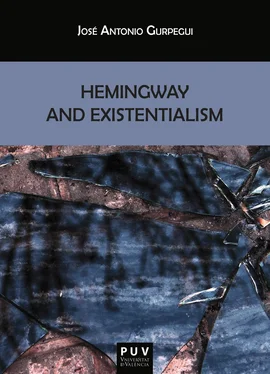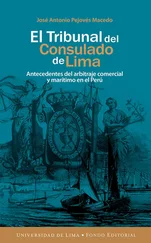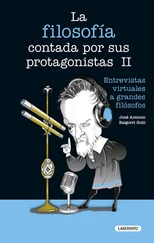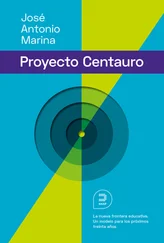The world was a good place to buy in. It seemed like a fine philosophy. In five years, I thought, it will seem just as silly as all the other fine philosophies I’ve had.
Perhaps that wasn’t true, though. Perhaps as you went along you did learn something. I did not care what it was all about. All I wanted to know was how to live in it. Maybe if you found out how to live in it you learned from that what it was all about. (148)
Hemingway, personified in Jake, shows a palpable disappointment with “all the other fine philosophies I’ve had,” emphasizing his need to find out “how to live in it,” to learn “what it is all about.” In brief, it is all about the same restlessness that the “thinkers” of the time were trying to solve when urged by the same anguish that afflicted Hemingway.
The philosophers that lived between the wars found what they were looking for in the philosophy of the Danish philosopher, Sören Kierkegaard, who based and structured his reasoning around the uniqueness of the individual. To exist as an individual, Kierkegaard would say, it is necessary to isolate from the world. Only then would the individual be conscious of his own being, that is, “he will exist,” which on its own would bring about the greatest misfortune, for our existence is finite and this is a cause for desperation for the human kind. “Is desperation an advantage or a defect?” Kierkegaard would ask himself in The Sickness unto Death ( Sygdommen til döden ) “regarded in a purely dialectical way it is both” (147), he responds.
In this same work, the philosopher would reflect upon, “what a delusion most needs is the very thing it least thinks of—naturally, for otherwise it would be a delusion (223). The Europe of the first half of the 20th century would find in Kierkegaard, in his existentialism, a new model through which man would confront, while at the same time find, his place in the world and in society.
In Henry Miller : The Paris Years , Brassaï, Miller’s contemporary photographer and friend, reflects how Parisian life was during the time between the wars, emphasizing the conceptual differences between the United States and Paris. According to Brassaï, “His long dry spells he blamed on the sterility of America…” (18). On the other hand Miller writes in Tropic of Capricorn , “I did not open my eyes wide and full and clear until I struck Paris” (17). Hemingway went through the same exact process some years earlier. His life in Paris in the 1920’s and 30’s would have certainly been similar to Miller’s if his first wife, Hadley Richardson, would not have accompanied him. The atmosphere, the “zeitgeist” that Brassaï reflected upon, is truly similar to what is found in Hemingway’s A Moveable Feast. Brassaï remembers,
To get there from Montparnasse, you descended Boulevard Raspail, crossed the Seine at Pont-Royal, traversed the Tuileries to the Avenue de l’Opèra then up to Rue Scribe. By taxi, car, subway, bus, carriage and, most often on foot, every American who has ever lived in Paris, from Gertrude Stein to Fitzgerald, Isadora Duncan to Hemingway and Steinbeck, has trod this path of hope and dreams. (27)
There is no proof or reference, direct or indirect, that Hemingway read neither Kierkegaard nor any other existentialist philosopher—it is known that Nietzsche was Miller’s “bed night reading”. Using Killinger’s words, Hemingway “imbibed the spirit of existentialism in the bars and bistros of that city [Paris] in the nineteentwenties” (vii). Jacqueline Brogan expresses herself in similar terms in her “‘It’s Only Interesting the First Time’: or, Hemingway as Kierkegaard,” for whom,
This conjunction of Kierkegaard’s insights with Hemingway’s novel is not meant to suggest that Hemingway was directly influenced by Kierkegaard. Rather, it exposes something akin to a compulsion in both authors, both of whom relentlessly double, retract, and contradict their perspectives on numerous ethical questions when ethical position of writing itself. (2)
Accepting Killinger’s appreciation, from a more general point of view, and Brogan’s, from a more specific point of view, 11 I would add that reading Russian writers such as Turgenieff, and also Dostoievski, Tolstoi, and Gogol—all of them mentioned repeatedly by the writer as his more direct references, and novelists of a clear and demonstrated existentialist philosophy—turned out to be a fundamental and definitive influence for Hemingway in his existentialist approximation to the complex literary universe. Kenneth Lynn assures that while writing The Sun Also Rises , Hemingway was reading Tolstoi (297); and it is even more significant that his character Jake, as mentioned, reads Turgenieff. Be that as it may, Killinger in his “Foreword” of Hemingway and the Dead Gods: A Study in Existentialism (1965), masterly summarizes the beginning, the “initial hypothesis” of this theory,
Hemingway’s philosophy of life, which appears already to have taken form in his earliest stories and sketches, and which therefore antedates every publication of both the German and the French existentialists, has not been affected by contact with this group of sophisticated thinkers, but has been the hard, wrung-from-the-heart product of life in an age which has been, in many ways, more difficult than any other. In a time when death is so mechanical and impersonal as to produce the nada- concept, when one of man’s most profound fears is of nihilation by absorption into the machine, the mass, or whatever, it is not unlikely that many thinking men arrive independently at approximately the same conclusions about what it means to exist. (vii)
It is precisely that direct and intellectual “ignorance” of the existentialist theories, the reason why it is not possible to tie Hemingway to any concrete “existentialist school.” Nevertheless, it can be clearly found in his works the philosophical beginnings of the important theoreticians of the movement: Kierkegaard, “father” of modern existentialism; Heidegger, who recuperated it at the beginning of the 20 thcentury and gave it the category of philosophical school; Jaspers, who would establish a nexus between this “new” philosophy and the prior ones; and finally, Sartre, who took it to its highest level of popularity. 12
Theoretical Frame
It has already been mentioned how the new times which humanity lived demanded new models of expression. However literary works express or reflect the philosophy of their time either to accept it or question it. The analysis of the philosophical altercations of the time when Hemingway writes his works would turn out to be fundamental to understand the determining factors and ideas reflected in his novels.
The philosophical panorama in the first half of the 20 thcentury was dominated by two clearly differentiated determinants :on the one hand, Russian dialectical materialism and its satellite countries and, on the other hand, western existentialism, mainly in France and Germany. Although Sartre 13 would still take some years to publish his more important existentialist works, the Paris of the 1920’s and 30’s lived the fervor deriving from a new concept of the human kind which, to a certain point, envisaged the “Belle Epoque.” Sören Kierkegaard was the father of modern existentialism and his theories were already known and studied in Europe, although not in a generalized manner (Heidegger published Sein und Zeit in 1927).
It has just been mentioned that there is no proof that Hemingway had any direct or indirect relationship with the existentialist philosophy; however, Hemingway’s relationship with existentialism seems unquestionable. Just a simple search as “combining” the words “Hemingway” and “existentialism” in Google showed 354.000 results on August 2013. This does not mean that they are all about the subject, far from it. Only the first three pages of references are of some interest.
Читать дальше












